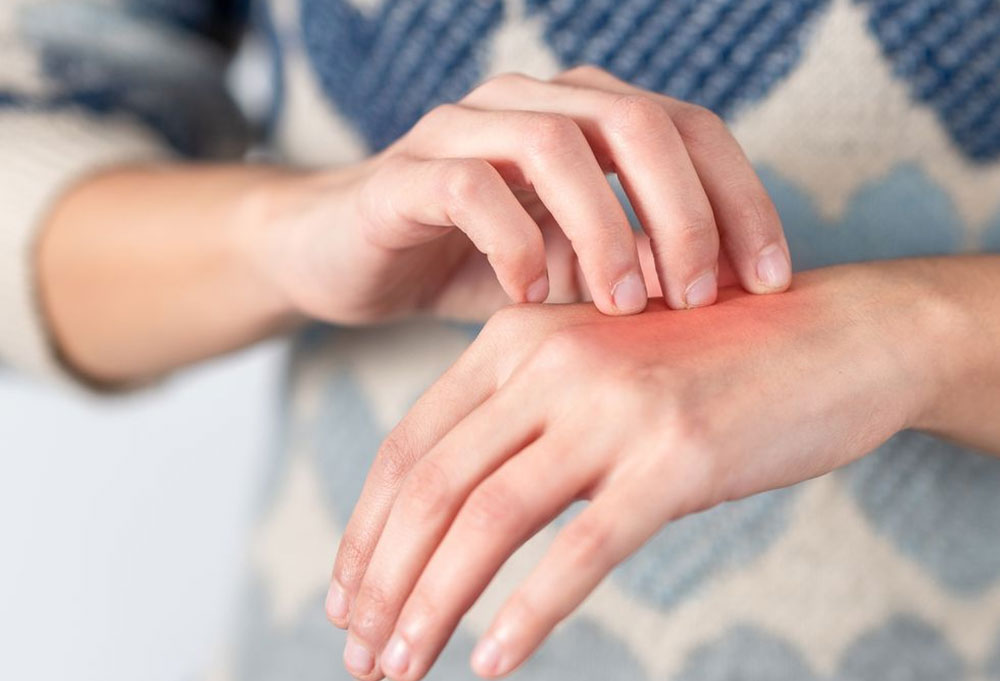Table of Contents
Fungal acne is not actually acne. It’s a fungal infection on your skin that can lead to small raised bumps and spots, just like acne.
Fungal acne is caused by an overgrowth of yeast on your skin, which triggers an immune response in the form of those little bumps. It’s most common on the chest and back but can also appear on the face or other parts of the body.
It’s important to distinguish between fungal acne and traditional acne because they’re treated differently. If you treat fungal acne with traditional methods, it will make things worse instead of better. So how do you know if you have fungal acne? And more importantly, how do you get rid of it?
What does fungal acne look like?
Fungal acne vs. closed comedones:
Closed comedones are very tiny bumps that can be seen with the naked eye. They are small enough that you cannot see the actual blocked pore.
Fungal acne is a yeast infection of the skin, and if you treat it like regular acne, it can actually get worse. If you try to extract the bump or use harsh ingredients like benzoyl peroxide, you will irritate the skin and infect even more pores.
If this happens to you, don’t worry there is a solution!
First of all, how do you know if your closed comedones are fungal acne?
Fungal acne looks very similar to closed comedones. Both are raised bumps on the skin that have no head (unlike regular pimples). The main difference is that fungal acne grows in clusters and when you squeeze them, they ooze out a thicker substance than regular pimples do. It can also appear along with closed comedones.
The good news is that fungal acne shares many of the same characteristics as closed comedones: they both thrive in warm, moist environments and they both look very similar.
What kills fungal acne?
Antibiotics are also an effective approach to treating acne. While often overused, antibiotics work by killing the bacteria that live inside the pore. Doctors often prescribe antibiotics for acne when patients have a lot of inflammation on their skin or an infection that causes pus-filled bumps above the surface of the skin.
One of the best things you can do for your skin is to wash it regularly. Washing your face twice a day with soap and water will help keep oil, dirt and bacteria out of your pores and keep them healthy. Some acne sufferers find that they need or benefit from using an over-the-counter cleanser or a facial mask once or twice a week.
4 Scalp Cleansers and Dandruff Shampoos Worth Trying
When it comes to the scalp, you want to smell fresh and not have flakes on your pillowcase.
Your scalp is covered in oil glands, and the oils produced by these glands provide your hair with luster and shine. The scalp is also home to dandruff, which may sound like a mild term but can be a struggle to control. That’s why you need to rinse it down with a gentle cleanser every once in a while.
The key is finding something that won’t dry out your skin or strip away all the natural oils from your scalp. Some of the best pick-me-up cleansers include:
Triple Action Scalp Shampoo ($10, walmart.com) — This shampoo works to cleanse, exfoliate and prevent dandruff and scaling
Selsun Blue Scalp Rinse ($4, selsun.com) — Selsun Blue is an anti-dandruff shampoo (and conditioner), which helps stop flaking
Head & Shoulders After Sun Shampoo ($9, drugstore.com) — This gentle shampoo will cleanse while moisturizing dry hair and scalp.
Cetaphil Scalp Cleanser ($8; cetaphilusa.com) This is a good option if you need something that works quickly. It’s very mild and won’t upset your skin while it gets rid of all the gunk that’s clinging to your hair follicles.
What shampoo gets rid of fungal acne?
I have been using Nizoral shampoo as a body wash for a year and a half now because I have fungal acne. It helps immensely. 1% is the highest concentration you can get over the counter, but I’ve read that to kill fungus, you need at least 2-3%. My dermatologist prescribed me with Nizoral (ketoconazole) 2% shampoo and it’s the same color as Nizoral 1%, so I don’t think there’s a higher concentration available.
Can apple cider vinegar kill fungal acne?
Though apple cider vinegar has been touted as a cure-all for everything from warts to weight loss, there’s no scientific evidence that it can treat acne.
There are some preliminary studies that suggest apple cider vinegar may have some antibacterial properties, but the studies were conducted in a lab, not on people.
The bottom line: Until more research is done, there’s no way to know whether or not apple cider vinegar can stop fungal acne.
If you decide to try it anyway, keep these things in mind:
Ask your doctor first. If you have sensitive skin, your dermatologist may recommend against using ACV directly on your skin.
Avoid using undiluted ACV on your face. ACV is highly acidic and could irritate, dry out, or burn your face if used without dilution.
Use a cotton ball to apply ACV directly to fungal acne spots on your body. Allow it to dry and then rinse off with warm water. Do this once or twice daily until symptoms clear up.
The best fungal acne routine
Here’s how to get rid of fungal acne:
Step 1: Wash your face with a cleanser that contains pyrithione zinc. I love the Murad Acne Control Clarifying Cleanser.
Step 2: Apply a vitamin C serum. This will help brighten your skin and fade any acne scars or hyperpigmentation.
Step 3: Apply an anti-fungal product like the Rephresh Anti-Fungal Spray.
Step 4: Finish with a gentle moisturizer without oils or fragrances, like Eucerin Intensive Repair Lotion.

